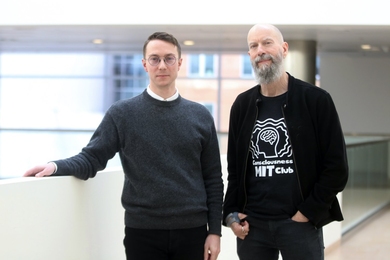CAMBRIDGE, Mass.--The MIT Japan Program sponsored a conference entitled "From Bullying to Buying: Opportunities for Foreign Investment in Japan" on January 11-12, 1999. The speakers included leading economists and financial analysts, managers of leading manufacturing and service-sector firms, and representatives from government and academia.
The most basic question motivating the conference was: Is Japan's economy changing in ways that make it more hospitable to foreign investment?
In his opening remarks, conference host Richard J. Samuels, Ford International Professor of Political Science and Director of the MIT Japan Program, said that there are three ways to view whether change in the Japanese economy is making it more open: that it has been happening gradually all along, that it is happening at last because of powerful economic forces, or that it is happening at least to the extent necessary to end the economic downturn of the 1990s.
The current level of foreign investment in Japan is minuscule and clearly distinguishes Japan from most other countries. Among other G7 countries, foreign investment falls in the range of around 6 to 30 percent of GDP, but the stock of foreign investment in Japan is less than $20 billion, or 0.4% of GDP. Speakers at the conference noted, however, that over the coming five years foreign investment in Japan could increase nearly ten-fold to the range of 3 to 4% of GDP.
The overall tone of the conference was upbeat: opportunities for foreign investment are increasing in Japan and the environment is becoming easier to work in. Japan's economic system is undergoing a fundamental process of adjustment that goes beyond ordinary economic cycles. The prospect of providing for a rapidly aging population, in combination with the shock of a generation of younger Japanese who have seen a whole decade of wealth creation wiped out during the 1990s, is bringing about major changes to the financial system.
Conference speakers provided many examples of change in the Japanese economy. Financial deregulation and economic reforms are forcing Japanese managers and investors to pay attention to the cost of capital and seek better returns. The need to address seriously underfunded government and private pension liabilities has brought about liberalization of the fund management business, and foreign firms have found new opportunities.
Cross-shareholdings among Japanese firms has fallen from a height of 70% to 50% of market capitalization and continue to fall at around 3% per year. The number of M&A transactions in Japan reached a record level of 899 in 1998, and the value of transactions increased 136% to 3.64 trillion yen. With the decline of the lifetime-employment system foreign firms find it easier to hire top talent as well as recruit high-quality university graduates.
Although medium- to long-term opportunities exist, many speakers cautioned that the short-term picture is not bright and uncertainties abound. The sharp contradiction between the long-term interests of the economy and the short-term interests of politicians is a reason to worry that reforms will be derailed. The Japanese banking system remains mired in 100 trillion yen of bad debts. Several speakers agreed that a further significant fall in the equity markets is possible. David Asher, Research Fellow at the MIT Japan Program, was the most dire in his warning that the reckless fiscal-stimulus and investment policies of the Japanese government are creating the conditions for a severe fiscal crisis by the end of 1999.
Whether change is happening "at last" or "at least," most speakers agreed that the Japanese economy is more open and that the long-term prospect of a healthy Japanese economy made it worthwhile for foreign investors to carefully evaluate new opportunities there.
The MIT Japan Program is the world's largest, most comprehensive and most widely copied center of applied Japanese studies. The program was founded in 1981 with the core mission to address the critical issue of scientific, technological and management research, knowledge and networks between the U.S. and Japan. The MIT Japan Program has four core activities: education, training, research and outreach. In the area of education, the program has placed approximately 500 MIT students and alumni/ae in Japanese organizations for internships. In training, the program draws on the vast technology, management and strategy expertise at MIT to provide training programs for American businesses. In research and outreach, the program sponsors research projects which result in working papers, a video series and CD-ROM instructional tools.





